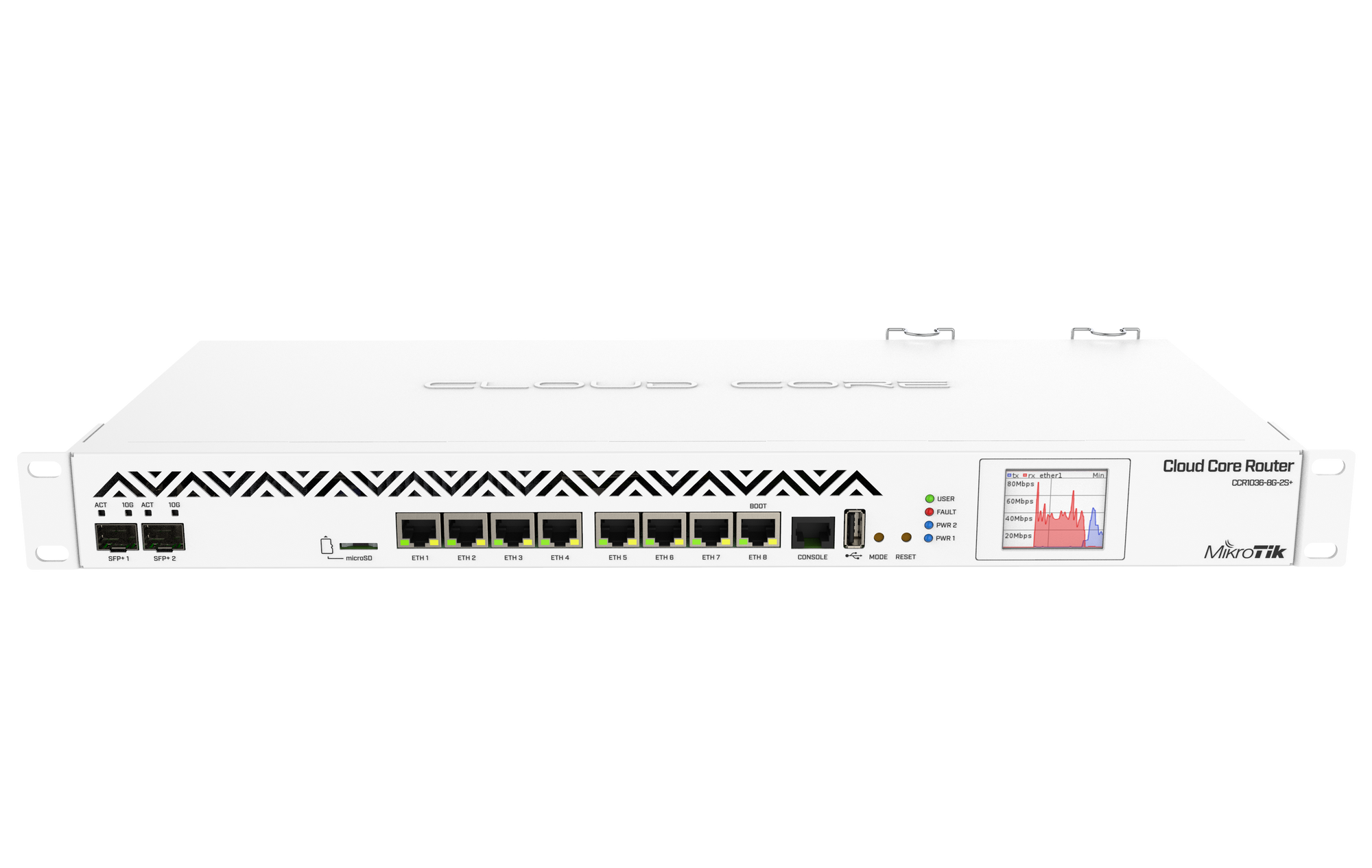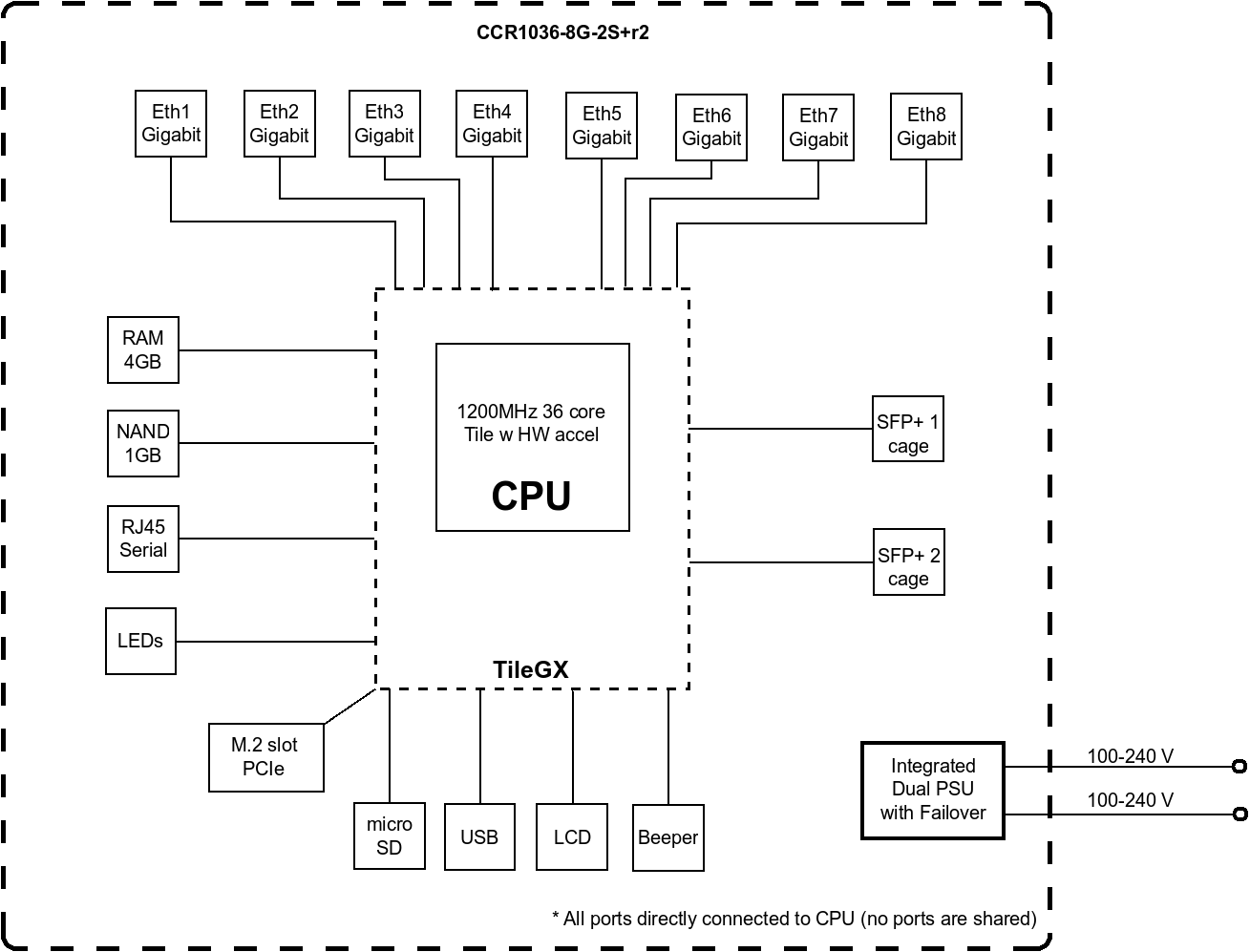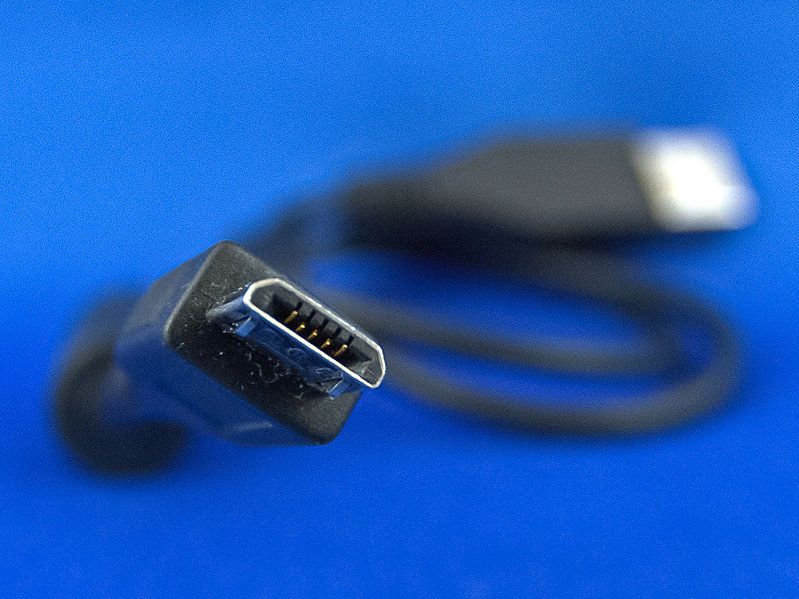Exploring a used MikroTik CCR1036-8G-2S+

Tile-GX was a chip product from the Tilera Corporation which eventually shutdown in 2014 when it was purchased by EZchip Semiconductor which then merged will Mellanox Technologies in 2016 and went on to be purchased by Nvidia in 2019.
Linux dropped official kernel support for Tile in 2018, but the specifications of this chip were interesting:

Mikrotik was probably the first one to use the latest GX chip back in 2012 from whence the Cloud Core Router (CCR) product line came about in 2013:
An R2 version of this CCR is currently being sold sporting an additional M.2 SSD, dual PSU, a full USB connector, and a (possibly working) MicroSD slot for the low, low, low, price of only USD $1,195 (plus appropriate taxes)!

But, wait, no separate switch chip? Well, all those 36-cores more than make up for the processing load for which a separate switch chip would have been needed for!
Why are we talking about old hardware? Well, old doesn't mean necessarily mean bad. Not if it was architected correctly in the first place, like this one.
And, here is where things become interesting. I recently acquired an R1 version of this router from a thrift store at about less than half the price it would have been new. It appears to have been the result of a hardware refresh since its last configuration backup was in 2017 (more on this later). I made an unboxing video of when it finally arrived (signature was required) but haven't gotten down to uploading it, yet. This blog post will get updated once I do, so, stay tuned for that.
According to the specs the MicroSD slot on a TILE architecture should allow for a 2TB storage option. Per my tests no version of MicroSD card has worked and I've gone through the list starting from the latest versions in 2023 all the way back to what would have been released back in 2014. I've even tried the industrial versions from SanDisk and Kingston as those would have promised longevity and the speeds required to support a device that would store lines and database files. Save yourself some heartache and move along.
According to the specs there is a USB connector. On the R2 hardware version this is a full-on USB Standard-A. However, on an R1 on closer inspection this is actually USB Micro-B. This version of a connection is (and continues to be for the time being, until USB-C catches up) the most common at the time. I used an old Samsung OTG adapter for my old Galaxy 7 Edge and then connected another adapter for a 256GB MicroSD card from my DJI Osmo Action 3 ... and it worked!

I'll be doing more tests. As of this moment it's been purring along in the Homelab alongside the NanoPi R5S running FriendlyWRT (an OpenWRT port) for parity comparison. Depending on the performance the plan is to possibly graduate it as the main router or serve internal routing duties once paired with a quieter switch that replaces the Dell PowerConnect 5324 and the PowerEdge R720xd which as been recently driving me insane.